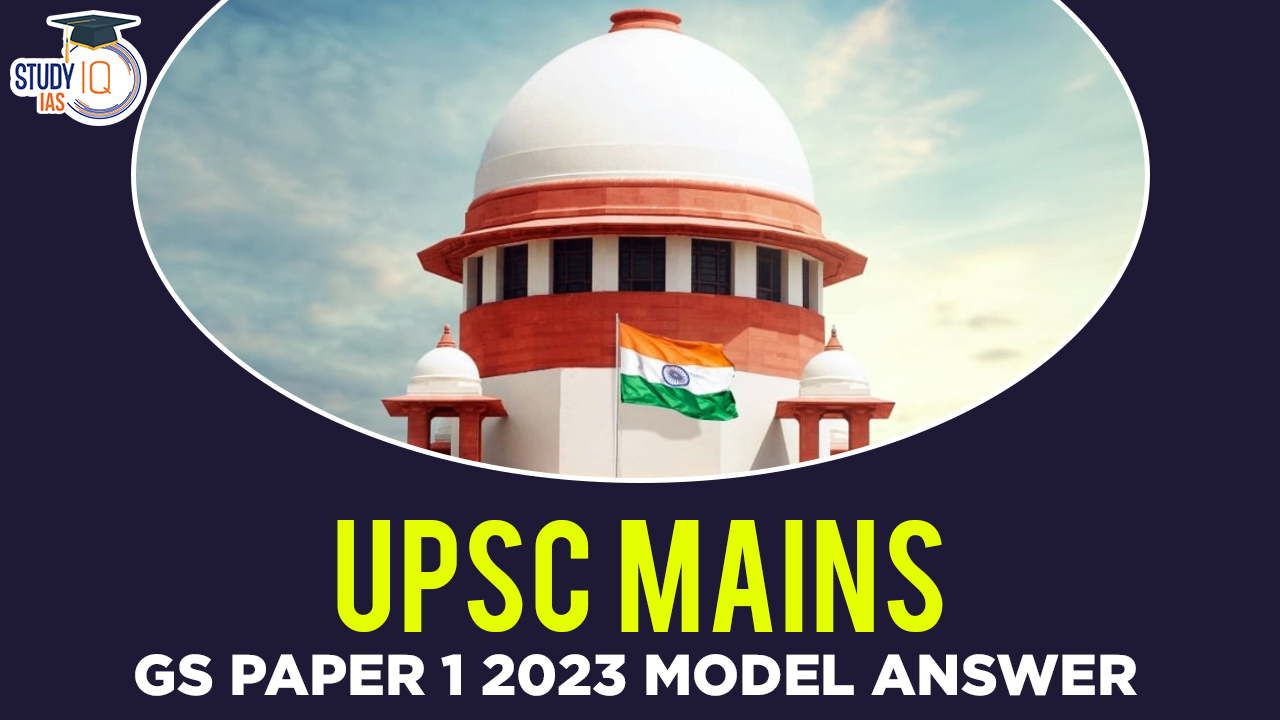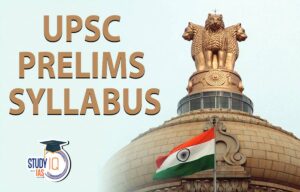Q13. How did colonial rule affect the tribals in India and what was the tribal response to colonial oppression? (15 M) – Modern History
भारत में औपनिवेशिक शासन ने आदिवासियों को कैसे प्रभावित किया और औपनिवेशिक उत्पीड़न के प्रति आदिवासी प्रतिक्रिया क्या थी?
Introduction:
The arrival of the British East India Company in the 17th century and subsequent colonial expansion significantly disrupted the traditional way of life for India’s indigenous tribes. This period witnessed socio-economic, cultural, and political changes that led to both marginalisation of and resistance from tribal communities.
Body:
Impact of colonial rule on the tribals in India:
- Sovereignty and Autonomy: British colonial rule threatened the systems of self-governance and replaced them with the centralised British administration. The loss of sovereignty was a significant concern for tribal leaders.
- E.g. The Bhil Revolt (1822-1857) and Kol Revolt (1831-1832) fought for their autonomy.
- Land and Resource Rights: The British policies affected tribal lands and resources. Forests, which were vital to the livelihoods of many tribal communities, were taken over by the colonial administration leading to dispossession and hardships for the tribal people.
- E.g. Bastar Revolt and Bishnoi Movement (1730s) to preserve forest and livelihoods.
- Cultural and Religious Differences: British rule often disregarded their cultural practices and religious belief, leading to cultural alienation and resentment among the tribal populations.
- E.g. Tribals’ way of worshipping nature, sacred groves often came in conflict with the British.
- Displacement and Exploitation: British policies led to forced displacement from their ancestral lands to make way for infrastructure projects, plantations, and other British-controlled enterprises.
- E.g. Santhal Rebellion (1855-1856) and Bastar Rebellion (1910-1911).
- Violent Suppression: In almost all instances, tribal communities faced violent suppression by the British when they resisted the colonial authority. These harsh measures only served to strengthen their resolve to resist foreign rule.
Tribal Response to Colonial Oppression:
Revolts:
-
- Tribal movements erupted in different parts of India because of the denial of their rights by the British.
- Tamar Revolts (1789-1832): Led by Bhola Nath Sahay, tribal communities from Tamar revolted from 1789 to 1832 against the British oppression.
- The main cause of the revolt was the illegal withdrawal of land rights from the tribal communities.
- Various tribal communities such as Oraons, Mundas, Hos and Kols also joined the uprising following directions from their leader Ganga Singh.
- During the revolt, the tribals killed the ‘dikus’ in each village, torched houses and robbed their belongings.
- The Kherwar Movement (1833): This movement was led by Bhagirath Majhi. The main cause of the movement was the tribals’ desire to retain their independent territory which they enjoyed in the past.
-
- Santhal Revolt (1855): Santhal revolt was started against the forced and unjust land ownership of Santhals by landlords. This movement was also directed against the village money-lenders and officials. This movement was started under the leadership of two brothers – Sidho and Kanhu.
- Bokta Movement (1858): Bokta movement erupted in various parts of Chotanagpur. Tribal tenants rebelled against the hike in land rent as well as their harassment by the landlords and clashes took place.
- Birsa Revolt (1895-1901): Birsa revolt was headed by Birsa Munda who revolted against the transformation of Munda agrarian system into a feudal state in Chotanagpur area. This revolt was against the zamindars, traders and the government officers under the British regime.
- Midnapur Movement (1918-1924): The Midnapur peasant movement gained momentum during late 19th century following the encroachment of tribal land.
Participation in National Movement
- Participation in Non-Cooperation Movement- Tribal leaders and communities participated in Mahatma Gandhi’s Non-Cooperation Movement, a peaceful protest against British policies.
- Support for Quit India Movement- In 1942, during the Quit India Movement, tribal leaders and communities actively supported the call for British withdrawal from India.
- Role in Civil Disobedience Movement– During the Civil Disobedience Movement, tribal leaders joined in acts of civil disobedience.
- E.g. Bardoli Satyagraha (1928), where tribal communities in Gujarat participated in civil disobedience against unjust taxation.
- Formation of Tribal Associations- Some tribal leaders established tribal associations and organisations to address their specific concerns and advocate for their rights.
- E.g. All India Tribal League, founded by Jaipal Singh Munda, advocated for tribal rights and welfare.
Way Forward
Tribal people resisted all forms of suppression and exploitation by the zamindari system, politicians, British officers or other representatives of the suppressors. The contemporary status of tribals is the outcome of the rebellious movements that took place since the late 18th century.
Check out the UPSC Mains GS Paper 1 2023 Analysis with detailed expatiation of the topics of Mains GS Paper 1 By the Study IQ Experts.


 NATO Countries List 2025, Members, Funct...
NATO Countries List 2025, Members, Funct...
 UPSC Prelims Syllabus 2025 PDF, Check Su...
UPSC Prelims Syllabus 2025 PDF, Check Su...
 UPSC Toppers 2024 Felicitation Program b...
UPSC Toppers 2024 Felicitation Program b...





















